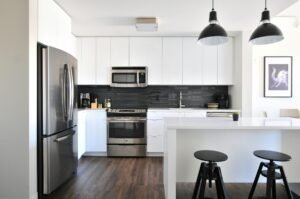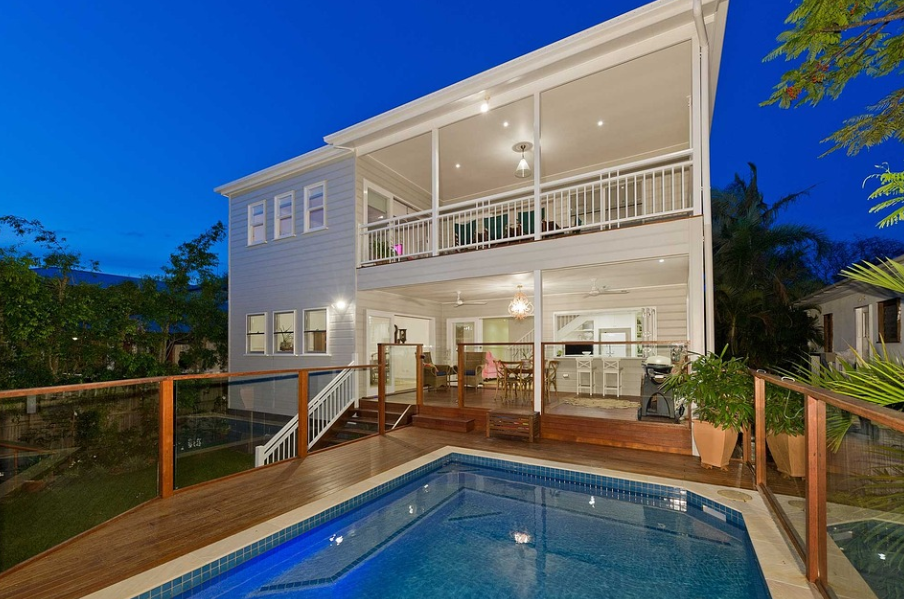Maximizing Value: Designing a Kitchen That Boosts Property Worth
In the realm of real estate, the kitchen holds a special place of importance. It’s often considered the heart of the home, a central hub where families gather, meals are prepared, and memories are made. As such, when it comes to increasing property value, few areas have as much potential impact as the kitchen. Whether you’re planning to sell your home soon or simply looking to invest in your property’s long-term worth, designing a kitchen with value in mind is a savvy decision. Here’s how to go about it:

Focus on Quality Materials
Quality materials not only enhance the aesthetics of your kitchen but also contribute to its longevity and perceived value. When selecting materials for your countertops, cabinets, flooring, and fixtures, opt for durable options that are known for their longevity. For countertops, materials like granite, quartz, or marble offer both durability and timeless elegance. Similarly, hardwood or high-quality laminate flooring can elevate the overall look of the kitchen while withstanding wear and tear over time.
Prioritize Functional Layouts
Efficiency is key when it comes to kitchen design. A well-thought-out layout not only enhances the cooking experience but also adds value to your property. Consider the classic kitchen work triangle, which connects the stove, sink, and refrigerator in a triangular layout, allowing for seamless movement between the three primary work areas. Additionally, ample storage space, strategically placed appliances, and sufficient counter space are all essential elements of a functional kitchen layout that prospective buyers will appreciate.
Invest in Modern Appliances
Modern, energy-efficient appliances not only make your kitchen more attractive but also appeal to buyers who are looking for convenience and savings on utility bills. Stainless steel appliances are a timeless choice that adds a sleek, contemporary look to any kitchen. Consider investing in appliances with smart features that allow for remote control and energy monitoring, further enhancing their appeal.
Incorporate Ample Storage Solutions
Storage is a top priority for many homebuyers, and a kitchen with ample storage solutions is sure to impress. Incorporate a mix of cabinets, drawers, and pantry space to accommodate various kitchen essentials, from cookware and utensils to dry goods and small appliances. Consider installing built-in organizers, pull-out shelves, and other space-saving solutions to maximize storage capacity and keep the kitchen clutter-free.
Embrace Timeless Design Elements
While it’s tempting to follow the latest design trends, it’s important to strike a balance between contemporary style and timeless appeal. Opt for design elements that have enduring popularity and universal appeal, such as neutral color palettes, classic cabinet styles, and simple hardware finishes. This ensures that your kitchen will remain attractive and relevant for years to come, increasing its long-term value.
Enhance Natural Light and Ventilation
A bright, airy kitchen is always a desirable feature in any home. Maximize natural light by incorporating large windows, skylights, or glass doors that allow sunlight to flood the space. Additionally, proper ventilation is essential for maintaining a healthy indoor environment and preventing moisture buildup. Consider installing a range hood with adequate ventilation to remove cooking odors, smoke, and excess heat from the kitchen.
Add Luxury Touches
Luxury touches can elevate the overall look and feel of your kitchen, adding a sense of sophistication and prestige. Consider incorporating upscale features such as a wine fridge, a built-in coffee maker, or a kitchen island with a waterfall countertop. These luxurious amenities not only enhance the functionality of the kitchen but also create a wow factor that sets your property apart from the competition.
Designing a kitchen that increases property value requires careful consideration of various factors, from the choice of materials and layout to the incorporation of modern appliances and luxury touches. By prioritizing quality, functionality, and timeless design, you can create a kitchen that not only enhances your everyday living experience but also boosts the resale value of your home. Whether you’re planning to sell in the near future or simply investing in your property’s long-term worth, a well-designed kitchen is a smart investment that pays dividends in the years to come.
Maximizing Value: Designing a Kitchen That Boosts Property Worth Read More »
